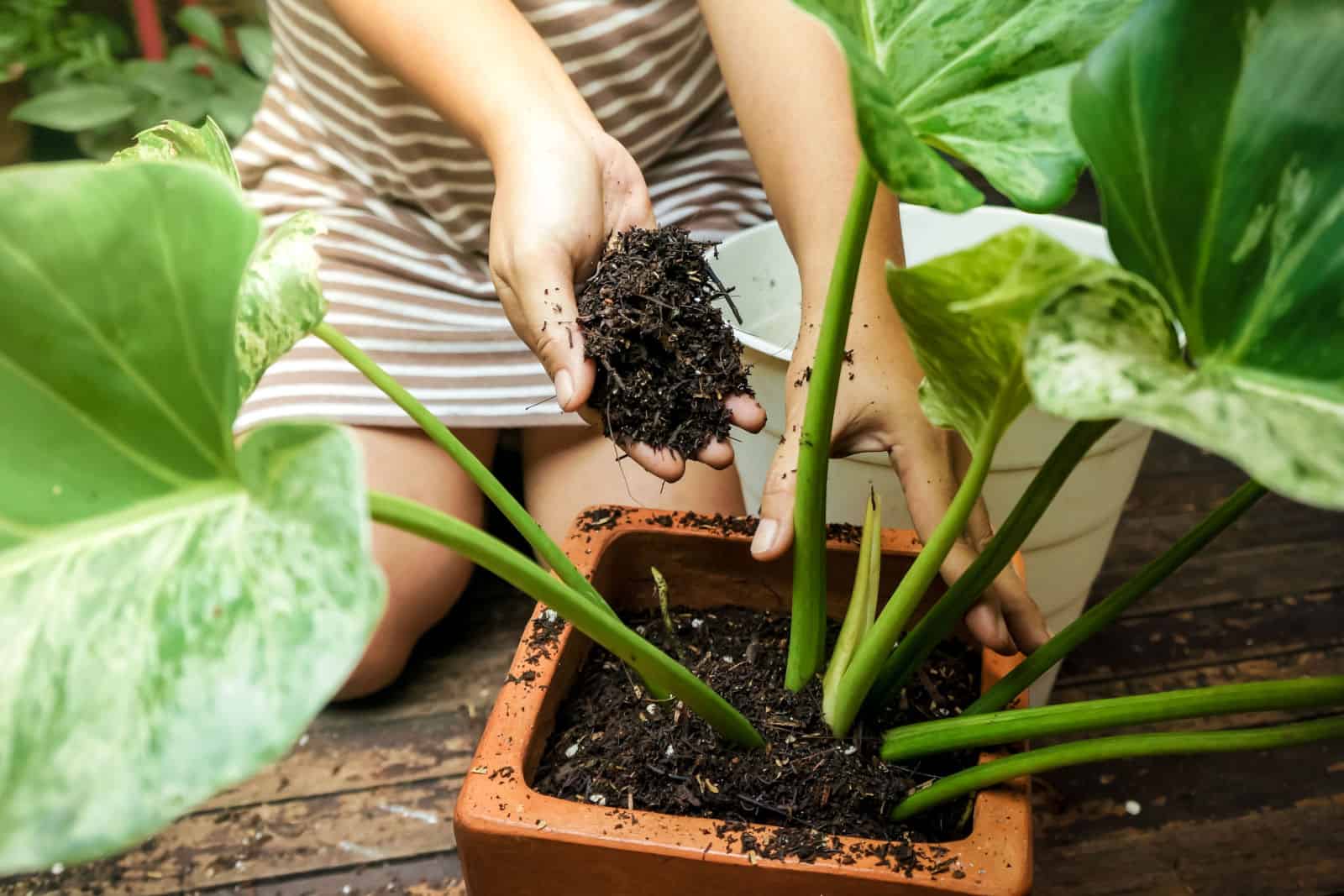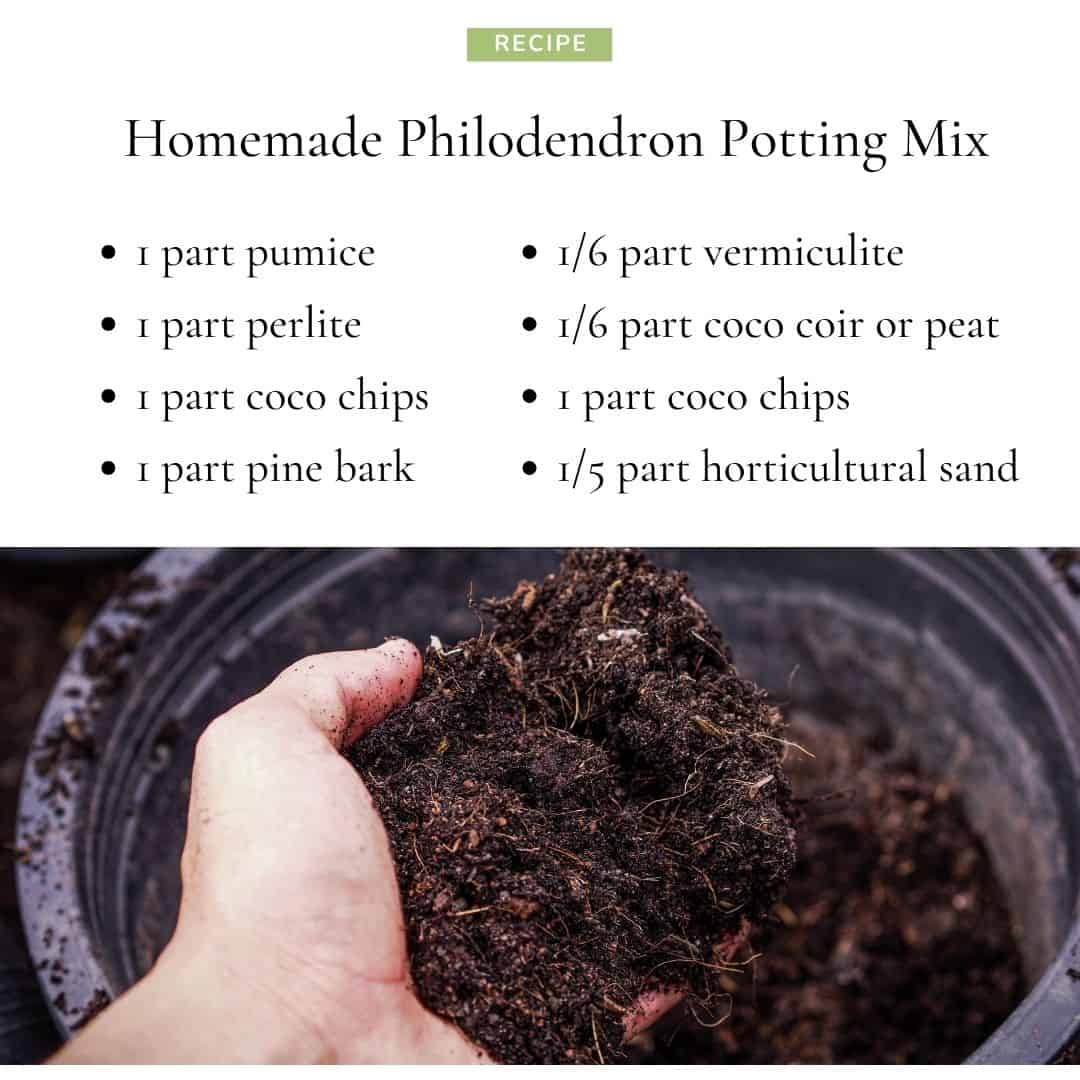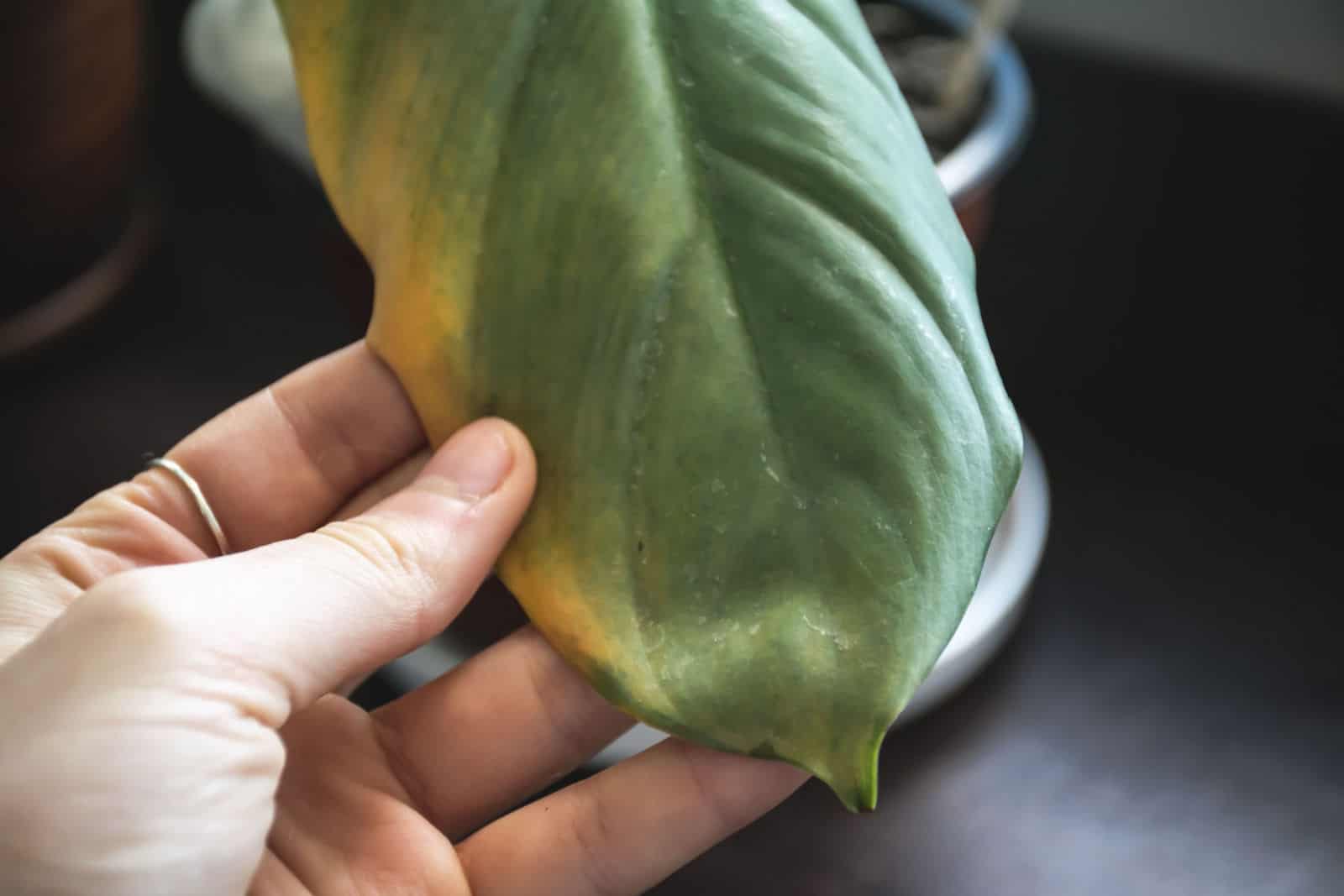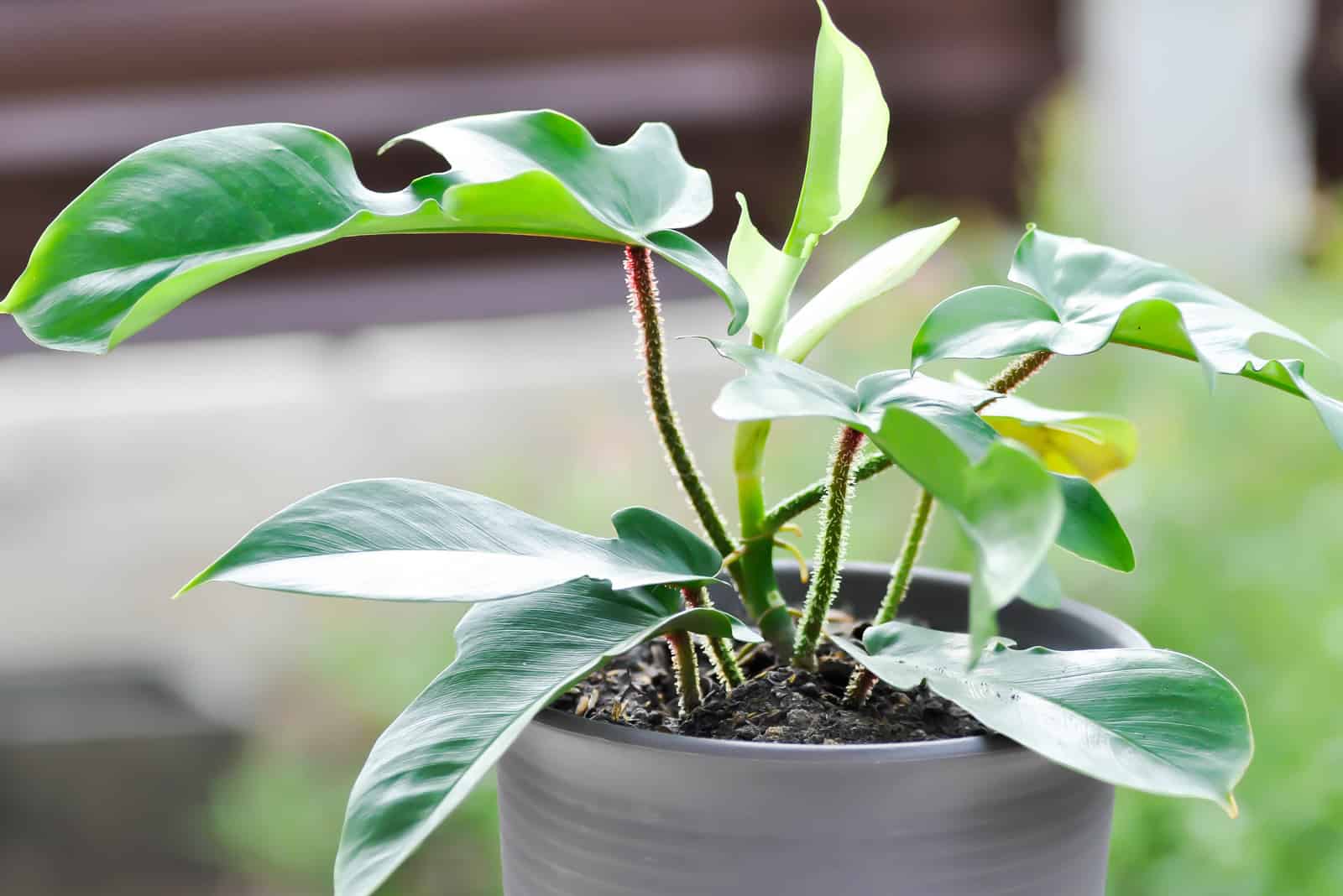Positive Bloom is an Amazon Associate and we earn from qualifying purchases through these links at no extra cost to you.
One of the main parts of every plant’s care guide is the type of growing medium you need to plant it in; and the same goes for philodendrons.
These climbing and trailing (and sometimes upright) varieties have specific soil needs that you need to meet in order for them to develop properly.
The best soil for philodendron needs to be well-draining and aerated, but retain moisture at the same time. The pH level shouldn’t be too high or low, and it must contain a certain amount of nutrients necessary for plant growth.
To help you out, we decided to discuss these factors in more detail in the following sections, and we’ll also include a couple of recipes for homemade philodendron soil.
And if you don’t have time to mix your own blend, you can find some amazing soil mixes down below!
Finally, if you choose the wrong potting soil for any philodendron variety, the plant will start deteriorating, and we’ll describe the symptoms that may occur in the last section.
Requirements For The Best Philodendron Soil Mix
Philodendron plant care requires using a suitable potting mix for philodendrons, which has to be well-draining, aerated, and loose, but retain some moisture as well.
The pH level should be slightly acidic, and the medium itself has to contain a good amount of nutrients for the plant to thrive.
We’ll discuss these things in more detail and include some ingredients that have draining or moisture-retentive properties.
Drainage & Aeration
Good drainage is crucial for philodendrons, and without it they might become overwatered and get infected with root rot.
The good news is that you can easily avoid this by using loose soils that contain perlite, pumice, or similar materials that don’t retain too much moisture.
These ingredients will allow the excess water to drain quickly and keep your plant’s roots safe.
These materials also encourage aeration, which is essential for healthy philodendron growth. The plant roots need oxygen to thrive, and coarse materials such as perlite, horticultural sand, bark, and grit allow this by making the soil looser.
And if you want to increase drainage even more, use containers with holes in the bottom and terracotta pots (this material allows moisture to evaporate faster).
Moisture Retention
Philodendrons require ample drainage and aeration, but that doesn’t mean you should use a medium that moisture simply drains through.
Instead, opt for mixes that contain a bit of coco coir, peat moss, humus, or compost since these materials retain moisture and release it whenever your plant needs it.
Furthermore, these ingredients don’t compact the potting medium or mess with needed drainage and aeration (if you use them sparingly).
pH Value
In general, philodendrons require a slightly acidic growing medium with a pH level between 5.0-6.0.
The pH value of the potting mix is essential for proper growth because your philodendrons won’t be able to absorb moisture and minerals effectively if it’s not suitable.
When buying a store-bought soil mix, you don’t have to pay too much attention to this because the blend already has the suggested pH value.
However, when making your own, you should test it out with a pH meter and adjust it accordingly. Using fertilizers can increase the soil pH level, so you should check it regularly.
For instance, if the pH level is alkaline, you can lower it by using acidifying agents such as lemon juice or vinegar dissolved in water.
Some suggest using peat moss or coffee grounds, but we haven’t had much success with this method as they don’t lower the pH enough.
And if the soil pH level is too acidic (even for your philos), you can add a bit of dolomite lime to increase it a bit.
Nutrients
Philodendrons are fast-growing plants native to tropical rainforests all over the world, and such environments usually have a growing medium incredibly rich in organic matter.
Therefore, always look for ingredients such as compost, humus, earthworm castings, etc., since they can enrich the potting soil mix with necessary nutrients and encourage the fast growth rate of your philodendrons.
Many store-bought blends contain fertilizers, and these are also a great option since your plant will have enough minerals to grow and you won’t have to feed it any time soon.
Homemade Philodendron Potting Mix
Making an aroid potting mix is quite easy, and it works amazingly for all your philodendrons, monsteras, pothos, etc.
We’ve tried many different blends, and although they work fine we wanted something that will really make our philodendrons thrive.
Here’s the philodendron soil mix recipe we found online and can’t get enough of:
We also like to add some worm castings to this mixture just to make it more fertile, as well as a bit of horticultural charcoal.
Instead of coco coir, you can also use sphagnum peat moss as it retains moisture equally well, although we try to use coco products as they’re more environmentally friendly.
In this video, you can find a similar recipe for making the best soil for philodendron:
7 Best Soils For Philodendrons On The Market
All tropical plants require well-draining growing mediums to flourish, and if you don’t have the time to mix your own blend, you can pop down to your local garden center and grab a bag of high-quality potting soil.
You can also order these online, and below you can see some of our favorite picks.
1. Miracle-Gro Indoor Potting Mix
This plant soil is suitable for many houseplants, including philodendrons. It contains added fertilizers and can nourish your plants for about six months, so you won’t have to feed it any time too soon.
What we love most about it is that it’s less prone to gnats because it doesn’t contain compost, but still has enough organic matter for your plants to thrive.
This blend has coconut coir, which we love as it is a more sustainable material and doesn’t hurt the environment (like harvesting peat moss does).
It is loose, easy to use, and contains potting instructions, which makes it perfect for beginners.
However, it is a bit expensive, but there are so many benefits that we can let the price slide.
2. rePotme Philodendron And Aroid Imperial Potting Soil
This aroid soil mix is suitable for various houseplants because it contains a perfect mixture of draining and moisture-retentive ingredients, making watering much easier.
It doesn’t contain compost or bark, so fungus gnats cannot find shelter in it.
The materials are fresh, the mix is handcrafted, and everything is as organic as it can be.
But one of the things we really love is the resealable bag since it made our life much easier, especially when we were starting out.
Finally, this blend is rather expensive, especially if you own many plants, but it will keep them healthy. (We decided it was worth every penny.)
3. Miracle-Gro Houseplant Potting Mix
This potting soil is perfect for many different indoor plants, including philodendrons, monsteras, pothos plants, spider plants, etc.
It doesn’t contain materials that attract fungus gnats, so it’s less likely you’ll have to deal with these pests.
And unlike many soils, this blend has a pleasant smell and elevates your gardening experience to another level.
My friend who’s a beginner says she has no issues with this mix; her plants are thriving, it is easy to use, and the instructions on the back are simple and perfect for newbies.
The soil contains added plant food, which ensures there are enough nutrients for the next half a year.
And the combo of perlite, coco coir, peat moss, and wetting agent makes a perfect balance between moisture retention and drainage that’s suitable for your philodendrons.
Finally, we do have to mention that this blend is pricey, although not many good ones are cheap.
4. Miracle-Gro Tropical Potting Mix
The Miracle-gro tropical potting mix is suitable for various leaf plants, from monsteras and philodendrons to spider and pothos plants.
It has a perfect amount of drainage and moisture-retentive ingredients, so your philodendron ‘Lemon Lime’ will stay hydrated for longer without getting waterlogged.
The blend contains added fertilizers that feed your plants for up to six months after repotting, so you don’t need to worry about fertilization.
The potting medium is suitable for indoor and outdoor planters, it is loose and easy to use, and the instructions on the back guarantee successful plant growth.
5. IvyMay Redwoods Houseplant And Aroid Potting Mix
This blend is made of 100% organic ingredients without any chemicals. It contains bark and perlite which makes it incredibly draining, providing your aroid houseplants with everything they need.
It is ready to use and you don’t have to mix it with other materials to improve its structure and make it more draining.
This blend is an eco-friendly option because it doesn’t contain peat moss (or coco coir for that matter).
We love this potting mix because it contains worm castings and feeds your plants a bit, but without any synthetic substances.
Finally, this IvyMay Redwoods potting mix contains peppermint oil, which masks the unpleasant smells and can even help keep pests at bay.
6. Rio Hamza Trading House & Tropical Potting Mix
This potting medium is perfect for various indoor plants, whether you own a philodendron, pothos, anthurium, or ZZ plant.
It has a perfect balance between drainage and water-retention, keeping your plants moist without risking waterlogging and root rot.
Even though this substrate doesn’t contain any added fertilizers, it does contain earthworm castings, which are an organic variant that adds nutrients to the soil.
It is loose and easy to use, and even though the bag is rather small, we haven’t found many reviews claiming it killed plants either.
7. Gardenera Aroid Potting Mix
This premixed blend allows you to pot and repot your Philodendron rugosum (and other aroids) as soon as you feel like it, requiring no additional amendments.
It doesn’t contain any chemicals, but is enriched with worm castings that make it fertile enough for your tropical plants.
The Gardenera aroid potting mix is a blend of perlite, coco coir, horticultural charcoal, orchid bark, and worm castings, which ensures perfect drainage for your plants while retaining some moisture along the way.
However, the smell isn’t pleasant and the quantity you get is rather small, so it’s not the best option for those who have an indoor jungle.
Signs Of An Incorrect Soil For Philodendrons
Now you know about the best soil for philodendron, but is it really necessary to get such blends?
Well, these species can tolerate various growing mediums as long as you adjust watering and feeding, but they’ll only thrive in well-draining and loose potting mixes.
And if you keep them in heavy or much too porous soils, you might notice symptoms such as leaf discolorations and wilting.
Yellowing Leaves
Yellow leaves are, in most cases, a sign that your plant is overwatered, which is why you should reduce the watering frequency.
However, heavy soils can only aggravate this symptom because they retain too much moisture and don’t allow air circulation around your plant’s roots.
Therefore, opt for a loose substrate which will allow the water to seep through, but still retain some so that you don’t have to irrigate your philodendrons twice a day.
Droopiness
If you notice that your Philodendron ‘Cream Splash’ (or any other philo) is wilting, you should check its growing medium.
Plants usually droop because they are either over or underwatered. Overwatered plants usually result in root rot, and such plants cannot absorb enough moisture and nutrients, leading to wilting.
Underwatered plants simply don’t get enough moisture and they cannot stand upright (the loss of turgor – pressure caused by fluid – causes plants to droop).
Inadequate soil can contribute to these conditions. For instance, porous mediums don’t retain moisture and plants cannot get hydrated enough, while heavy substrates retain too much water, leading to overwatering.
Browning And Dehydration
Brown, wrinkled, and dehydrated foliage is a sure sign that your plant doesn’t get enough moisture, which sometimes has nothing to do with watering frequency.
Porous and sandy soils are terrible at retaining moisture, which is why you shouldn’t use that sort of substrate with philodendrons. If you do, you should water them much more frequently.
The good news is that you don’t have to throw that potting mix away; simply add some coir and vermiculite, and you’ll turn into a perfect aroid blend.
Final Thoughts
The best soil for philodendron is well-draining, aerated, retains a bit of moisture, has a slightly acidic pH level, and is rich in organic matter.
You can find store-bought products that meet these requirements, or you can make your own blend.
Technically, philodendrons will tolerate heavier or more porous substrates, but you’ll have to adjust watering frequency accordingly.
If you don’t do that, you’ll find yourself dealing with dehydrated plants, discolored foliage, and droopy philodendrons.
Hopefully, it won’t come to that!
Until next time!





